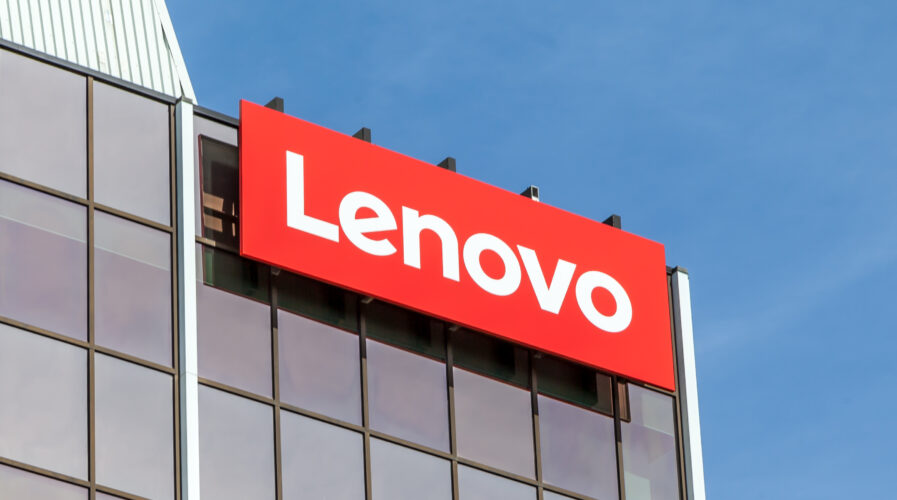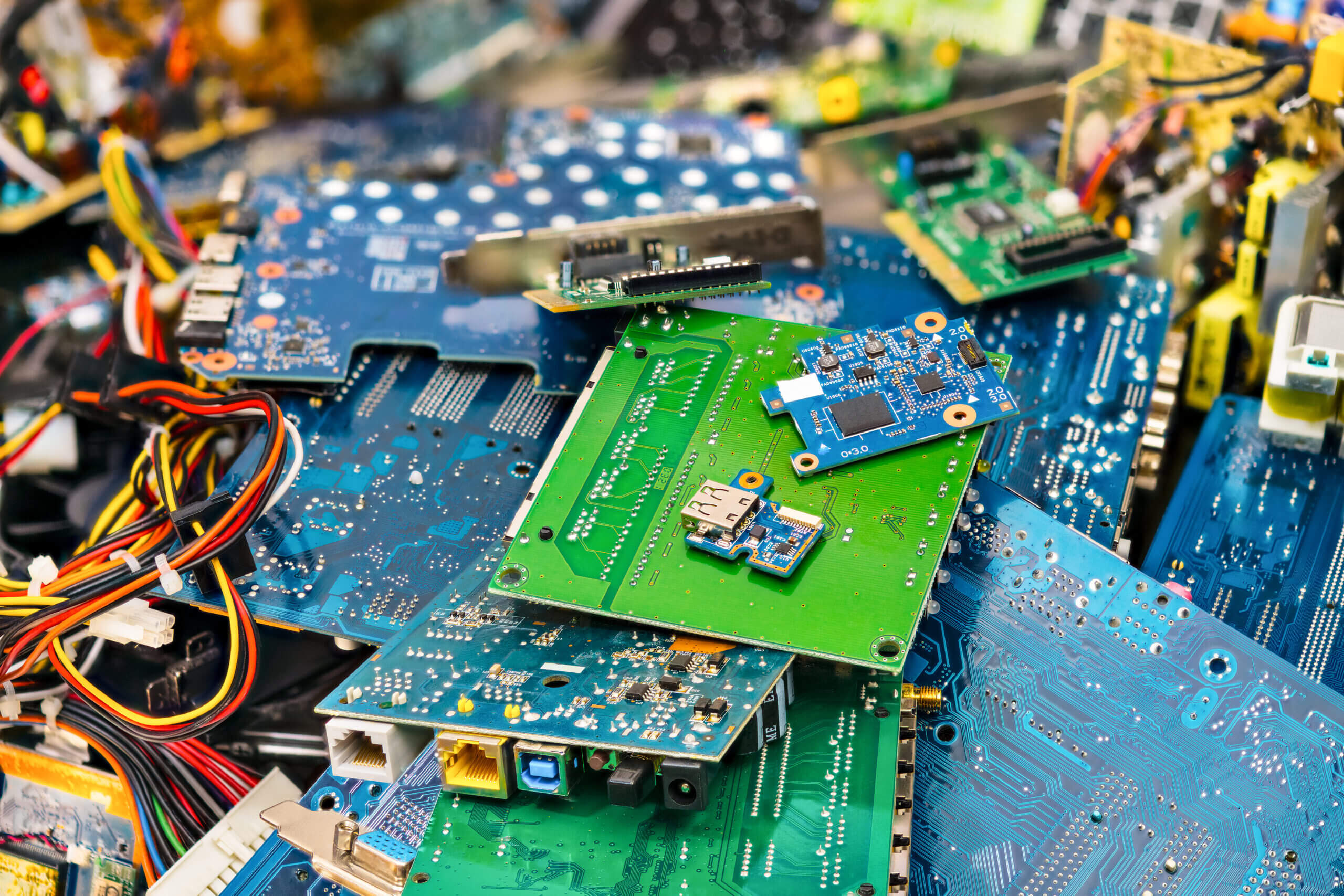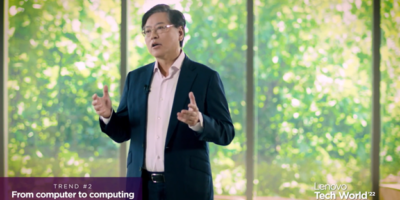
Here’s how Lenovo is charting the sustainability path with its “as a service” model.(source – shutterstock)
Here’s how Lenovo is charting the sustainability path with its “as a service” model
- TWA in conversation with Claudia Contreras, Executive Director of Global Sustainability Services at Lenovo discussed the tech giant’s as-a-service model, carbon offsets and assets recovery services.
Technology device manufacturers make hundreds of claims—carbon-neutral, carbon offsets, recycle materials—and it’s difficult to sort out which of those are just greenwashing and which approaches actually reduce the environmental harm of making, shipping, and using devices like smartphones or laptops for instance. After all, in the age of ‘climate change’, we have dozens of tech giants pledging to do more to reduce carbon emissions, but the proliferation of efforts has led to confusion, as well as sometimes questionable results.
While it is easy to set goals, sustainability efforts usually lie in the details. For a tech giant like Lenovo, beyond corporate goals to limit its own emissions, the company has committed to environmental leadership in all of its business activities — from operations to product design and recycling solutions. Tech Wire Asia recently got into the circular economy conversation with Claudia Contreras, Executive Director of Global Sustainability Services at Lenovo whereby she discussed the tech giant’s as-a-service model, carbon offsets and assets recovery services.
Tell us more about Lenovo’s sustainability effort currently
I’m the Executive Director for our Global Sustainability Services and that is essentially a part of our portfolio that aims to help customers meet their own sustainability goals by leveraging through our network and know-how that we have learned gathered through the years. Recently, Lenovo has committed to achieving 50% improvement in energy efficiency for desktops and servers and 30% for notebooks and Motorola products by FY 2029/30.
There is also a goal to purchase 90% of electricity from renewable sources and remove one million tons of GHG emissions from its supply chain by FY 2025/26. Lenovo also plans to continue transitioning to a circular economy through supply chain and product design innovation while optimizing the use of sustainable materials to minimize waste.
Can you share the sustainability services by Lenovo that are most in demand?
Our as-as-service model where you don’t have to own everything. Customers just use what they need to, while leveraging experts’ help to maintain it, and in that way, you start eliminating waste. We’ve also seen a really large uptick in the adoption of our CO2 offset program. It is a one-of-a-kind program within the tech industry where we make it easier for businesses to offset the carbon emissions associated with each Lenovo Think device. We provide the option at point of purchase.
How it works is that we have calculated the value of carbon emissions for all Lenovo Think devices over an average lifecycle of up to five years, including manufacture, shipping and usage. Following that, offsetting those emissions can then be considered part of a hardware configuration.
Interesting fact is that Lenovo CO2 Offset Services has just surpassed one million metric tonnes of carbon offsets, as more businesses champion sustainability practices. That is basically equivalent to greenhouse gasses emitted from more than 215,000 passenger vehicles driven over the course of one year.
When you say offsets, what do you actually mean by that?
The service works by factoring in emissions produced from the manufacture and shipping of each individual product, as well as those for an estimated typical five years of usage. This amount is then offset through one of many partner initiatives, including projects overseen by the United Nations.
Lenovo customers can choose carbon offset projects from a range of United Nations-approved initiatives spanning continents and hemispheres. A certificate confirming the offset emissions for each product’s serial number is issued with the purchase, along with an official certifying badge for each product.
Partner initiatives in Asia Pacific include a biomass energy project that generates electricity using a sugar mill, a wind energy project that generates clean and renewable energy, as well as a project that offers waste disposal in a safe and clean manner that generates renewable energy and reduces greenhouse gasses.

(Source – Shutterstock)
How does the as-a-service model by Lenovo work?
I call it the most sustainable model, because it enables customers to eliminate waste. What it does is that as a customer, you only buy what you need. That also means you don’t have to own a multitude of assets that you don’t need, so what we offer to our customers instead is a way to buy as they go or pay as they use, and when they don’t need it, they send it back.
Then we refurbish those devices and redeploy them whenever it’s needed. When it is not needed anymore, we take it and do proper asset disposition and who is better at doing it than us? Since we designed the machines and we built them, we are best at doing this process.
Do you see as-a-service models gaining traction?
For one, companies can turn their capital expenses into operating expenses. So that’s one big advantage — the financial implication is much different. At the same time, there is circularity whereby it enables predictability and what you need to do. So yeah, it has definitely gained traction and will continue to do so.
How is Lenovo dealing e-waste?
In our portfolio, we have Asset Recovery Services where we aim to take the complexity and risk out of asset disposition. ARS basically provides an end-to-end solution to mitigate the environmental and data security risks associated with end-of-life asset disposal while maximizing the value potential of those assets. So how it works is that Lenovo experts will assist you in the development of a sustainable corporate disposition strategy for any technology hardware, with a range of certified asset disposition options to meet your needs.
So what ends up happening is we bring your asset back, wipe the data from it so it is not leaked, then we will work on its disposition in the most environmentally friendly way and via certified processes. To top it off, our mission also is not only taking back Lenovo (devices). You are my customer, you need this and we support a circular economy. Therefore, if you even have Dell, HP or Apple, we will take it back and work on its disposition because that’s the responsible thing to do.
After all, Asset Recovery Services is how we address products when it comes to the end of its cycle.
**For context, e-waste — an electronic equipment that’s being thrown away — has a huge negative impact on our global environment and it’s getting worse every year. Companies face increasing demands for innovative products and solutions even as resources are becoming scarcer—and more expensive. Lenovo’s report indicates that the world produces more than 50 million metric tons of e-waste a year, it makes up 70% of our overall toxic waste.
What is more shocking is that only 20% of e-waste is formally recycled. “The e-waste produced annually is worth around US$60 billion. There is 100 times more gold in a ton of e-waste than in a ton of gold ore,” the report stated.
Where does Lenovo stand in a circular economy and what perhaps is the most important component today for a circular economy?
At Lenovo, we produce around 50 million assets per year — that is five assets per second. So we have a responsibility to ensure that we simplify the process even from the start with the design of the product. We further contribute to the circular economy by using recycled plastic sourced specifically from electronic devices, closed loop post-consumer recycled content, in many of our products. So if you design the product from the beginning to be circular, reusable, durable, all while using materials that are recyclable, then you start at a different place entirely.
**According to the Circular Economy in IT report by Lenovo, the economic advantages of employing a circular model in the electrical and electronics sector could be enormous. A circular economic model in IT could reduce costs for consumers by 7% in 2030, and 14% by 2040. In August this year, Lenovo, based on its Annual ESG report, indicated that it has increased its participation in the circular economy, integrating new recycled materials such as magnesium, aluminum, and ocean-bound plastic into products. Lenovo also grew its use of closed-loop recycled plastic (plastic from recycled electronics) and now manufactures 248 products that include closed-loop recycled plastic (up from 103 in last year’s report).
READ MORE
- Strategies for Democratizing GenAI
- The criticality of endpoint management in cybersecurity and operations
- Ethical AI: The renewed importance of safeguarding data and customer privacy in Generative AI applications
- How Japan balances AI-driven opportunities with cybersecurity needs
- Deploying SASE: Benchmarking your approach


